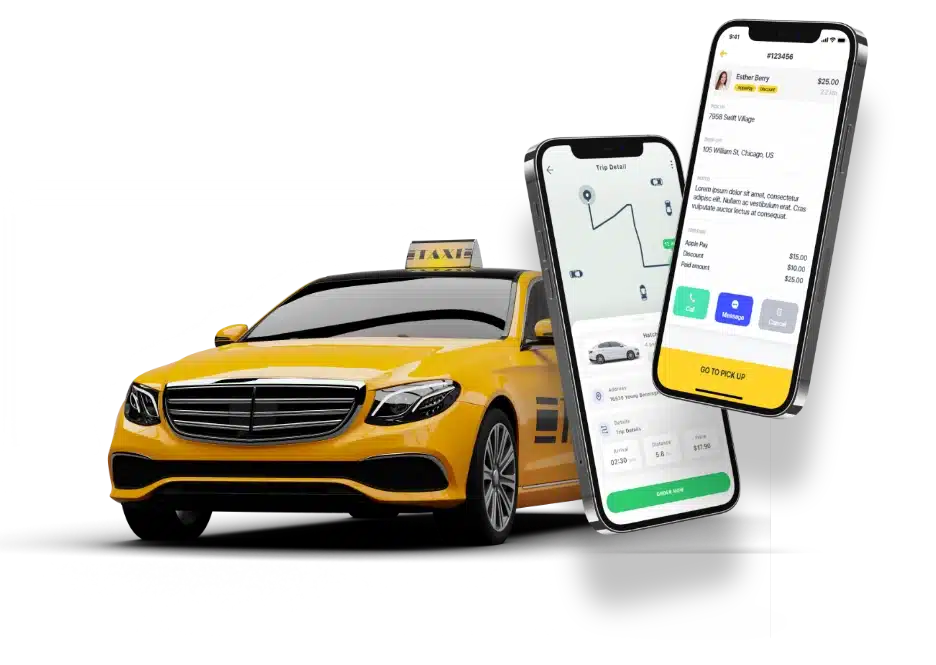In the continuously growing world of ride-hailing services, developing a successful Uber clone app entails more than simply copying the original Uber app’s functions. It requires a thorough awareness of market trends, user behavior, and technology improvements. A well-thought-out plan that includes market research, cutting-edge technology, user-centered design, and continuing support is required. This thorough book gives deep insights and concrete ideas for creating a unique Uber Clone App that not only meets, but surpasses, user expectations, ensuring its relevance and competitiveness in a crowded marketplace.
1. Conduct Thorough Market Research
Understanding the Ride-Hailing Ecosystem
Before embarking on the development of an Uber clone app, it’s crucial to understand the ride-hailing ecosystem. This includes analyzing existing competitors, identifying their strengths and weaknesses, and recognizing trends in the industry. By understanding the current market landscape, you can position your app uniquely to address unmet needs or gaps.
Identify Target Audience and Their Needs
Different regions and demographics may have specific needs and preferences when it comes to ride-hailing services. Conduct surveys, focus groups, and interviews to gather insights into what your target audience values most. Whether it’s premium services, budget options, or unique features, aligning your app’s offerings with user expectations will set you apart.
2. Define Your Unique Value Proposition
Niche Specialization
While replicating Uber’s core features is a starting point, defining a unique value proposition (UVP) will help you carve out a niche in the market. Consider specializing in areas such as luxury transportation, eco-friendly rides, or services tailored to specific demographics (e.g., elderly, disabled, or students). Your UVP should address specific pain points or desires that are not adequately met by existing solutions.
Feature Differentiation
Incorporate features that enhance user experience and provide additional value. For instance, integrating advanced booking options, loyalty programs, or unique safety features can make your app stand out. Evaluate the competition and identify opportunities where you can innovate.
3. Plan and Prioritize Features
Essential Features
An effective Uber clone app should include core features such as:
- User and Driver Registration: Easy onboarding for both riders and drivers with verification processes.
- Ride Booking and Scheduling: Real-time ride requests, as well as the option to schedule rides in advance.
- GPS Integration: Accurate location tracking and route optimization for efficient ride management.
- Payment Integration: Secure payment gateways supporting various payment methods.
- Rating and Reviews: Systems for feedback from both riders and drivers to ensure service quality.
- Push Notifications: Alerts for ride status, promotions, and updates.
Advanced Features
To further enhance your app, consider integrating advanced features such as:
- In-App Communication: Options for in-app chat or call between riders and drivers.
- Ride Sharing: Features for carpooling or shared rides to attract eco-conscious users.
- Loyalty Programs: Reward systems to encourage repeat usage and customer retention.
- Multilingual Support: Catering to a diverse user base with multi-language options.
- Accessibility Features: Design considerations for users with disabilities.
4. Choose the Right Technology Stack
Front-End Technologies
- Native vs. Cross-Platform Development: Decide whether to develop native apps for iOS and Android or use cross-platform frameworks like React Native or Flutter. Native apps offer better performance but are more expensive to maintain, while cross-platform solutions provide cost efficiency and code reuse.
- UI/UX Design: Focus on creating an intuitive and user-friendly interface. Employ modern design principles to ensure that users have a seamless and enjoyable experience.
Back-End Technologies
- Server and Database: Choose robust back-end technologies and databases to handle high traffic and ensure data security. Popular choices include Node.js for server-side development and PostgreSQL or MongoDB for database management.
- Cloud Services: Utilize cloud platforms like AWS, Google Cloud, or Azure for scalability, reliability, and efficient resource management.
5. Prioritize User Experience (UX) Design
Intuitive Navigation
Design a user interface that is easy to navigate. The booking process should be straightforward, and users should be able to access key features and information with minimal effort.
Design for Drivers
The driver’s app interface should be equally intuitive, with features like easy access to navigation, ride requests, and earnings. Drivers should be able to manage their schedules and track their performance effortlessly.
Feedback Mechanisms
Incorporate mechanisms for users and drivers to provide feedback and report issues. Regularly review this feedback to make improvements and address any recurring problems.
6. Implement Robust Security Measures
Data Encryption
Ensure that user and driver data is protected using encryption protocols. Employ SSL/TLS for secure data transmission and use strong encryption methods for data at rest.
Secure Payment Processing
Integrate secure payment gateways that comply with PCI-DSS standards to safeguard financial transactions and user payment information.
Authentication and Authorization
Implement robust authentication methods, including two-factor authentication (2FA), to secure user accounts and ensure that only authorized individuals can access sensitive information.
7. Test Thoroughly and Prepare for Launch
Comprehensive Testing
Conduct extensive testing to identify and resolve issues before launch. This should include functional testing, usability testing, performance testing, and security testing.
Beta Testing
Release a beta version of your app to a select group of users to gather feedback and identify any remaining issues. Use this feedback to make final adjustments before the official launch.
8. Develop a Strategic Marketing Plan
Create a Marketing Strategy
Develop a comprehensive marketing strategy to promote your app and attract users. Utilize digital marketing channels such as social media, content marketing, and online advertising.
Optimize App Store Listings
Optimize your app’s listing on app stores using relevant keywords, compelling descriptions, and high-quality visuals. Encourage positive reviews and ratings to improve your app’s visibility and credibility.
Referral Programs and Promotions
Implement referral programs and promotional offers to incentivize users to invite others and try out your app. Limited-time discounts or rewards can boost initial user acquisition and engagement.
9. Monitor, Scale, and Maintain
Monitor Performance
Use analytics tools to track app performance, user behavior, and key metrics. Analyze this data to identify areas for improvement and make informed decisions.
Scalability
Ensure that your app’s infrastructure can scale with growing user numbers and increased demand. Plan for scaling up your server capacity and optimizing performance as needed.
Ongoing Maintenance
Regularly update your app to add new features, fix bugs, and enhance security. Provide continuous support to address user concerns and maintain a high level of service quality.
Conclusion
Developing a successful Uber clone app requires a holistic strategy that goes beyond simply copying existing features. By conducting thorough market research, establishing a unique value proposition, selecting the appropriate technological stack, and emphasizing user experience and security, you can create an app that stands out in the competitive ride-hailing market. With careful preparation, effective promotion, and continued maintenance, your Uber-like app can achieve success and provide value to both users and drivers. Following these tips and tricks will help you navigate the complexities of app development and position your app for long-term growth and success.




